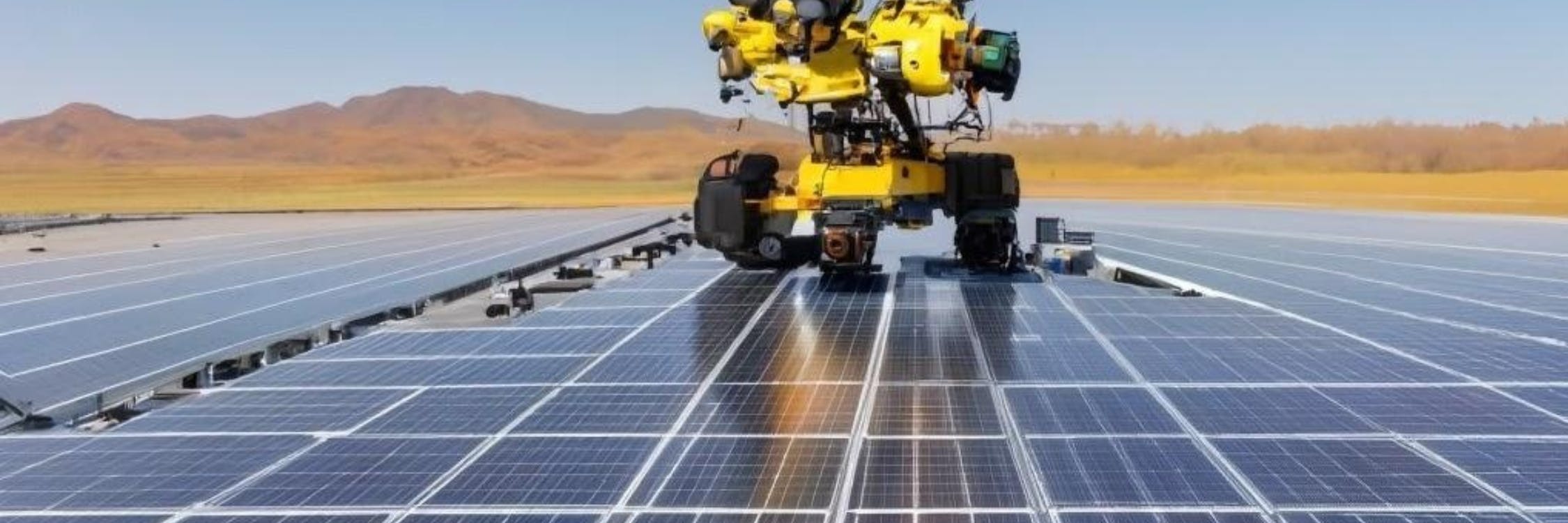Securing solar energy data


Harnessing the Sun: The Evolution of Solar Energy
Since the French physicist A.E. Becquerel’s initial work around the discovery of the photovoltaic effect at the beginning of the 19th century, the world forged ahead with developments in solar energy generation. Being one of the most promising sustainable energy sources of today, we have now numerous solar power plants on the globe. The total power generated from the solar power plants is already well above 500 GWh. To put this number into perspective, 1 Gigawatt hour is enough to sustain an average of 30 000 city households over a year. This number is estimated to rise by 2050 well above a factor of 3. Securing our future of the number of interconnected devices, estimated to reach over 50 billion devices by 2050, this is a very favorable forecast.
Industrial IoT: Powering Modern Solar Plants
The relationship between Industrial IoT and solar power plants takes on an important role when it comes to addressing some of the major issues faced by these plants. Industrial IoT infrastructures are of supreme importance when it comes to topics of providing scalable sustainable energy generation solutions. It is crucial to analyze in detail cost reduction, maintenance ease, efficiency optimization and prompt reaction times for solar power plants. The power plant set up and infrastructure architecture should also be designed flexibly enough so that any new technological changes can be implemented with little overhead and low costs. To address these challenges, Industrial IoT solutions are being more common place across massive infrastructures now.
Centralized Control: The Key to Efficient Power Plant Management
With these measures in place, power plants can be maintained from one single centralized location, that all the diverse parts of the power plant can also be monitored from. This in turn, provides for increased security and reliability of power plants. The ability to identify and react to any threats in real time, improves efficiency and keeps operational costs at minimum. Flexible IoT design solutions also make it easier to deploy ever-changing technology solutions across the vast power plants, which also aid towards reduction of costs.
Predictive Power: Harnessing Data for Precise Energy Forecasts
One of the other biggest challenges faced by power plants is how to exactly forecast the power they can produce. This is a particularly important element, where focus is on creating forecasts with the smallest margin of error. The bigger the error, the less efficient a power plant becomes and the more power loss a power plant experiences. This is the very reason why solar energy generation establishments invest heavily into collecting data across various parts of power plants. This data, collected through various sensors, controllers and operation devices is used towards resolving this issue. Since weather conditions oscillate customarily, the collected data is used for creating precise algorithms to calculate the exact energy that can be produced on a plant. It also serves towards minimizing the produced energy wastage. The same data is also used towards process optimizations, damage prevention, anomaly detection across diverse plant areas. Since the data is collected and analyzed in real-time, it facilitates prompt response to any security or oddity alerts. Owing to the data collected, demand and supply of the generated power has been made easier now. Intelligent storage units that contain the energy produced have been created.
Data Integrity: Guarding the Heartbeat of Power Plants
Because of the extensive areas the collected data is applied towards, it becomes equally important to have as clean data as possible. In addition to cleaning the data such that useful algorithms can be concluded from it, it is important to be able to identify and prevent incorporation of any misleading data collected by the systems. Thousands of microcontrollers spread across a plant pose a serious threat to the integrity of a power plant. A threat could come by means of an ‘outside’ party, unauthorized to use the systems, manage to access the devices and tamper with them in a way whereby the devices start generating misleading data. This in turn, result in damages such as: false forecast of power that could be generated; incorrect estimation on the return on investment from the energy production; incorrect calculation of the resources needed to maintain the energy generation, etc. It could also lead to a false security alert created on a plant. This in turn can lead to the entire plant being locked down and bring about a cosmic level of increase in the operational costs.
Protecting the Digital Lifeline: Security Measures for Data and Devices
Therefore, regular, strict measures should be taken to secure and maintain data integrity of power plants. Steps like regular backups, quick recovery processes, secure administration systems and secure network connections are vital here. In addition to these, securing the IoT devices is also an important aspect. In case of an attack, it should be possible to identify which devices have been compromised and the extent to which these have been compromised. Once identified, it should be possible to either replace these devices or abort their role in the entire ecosystem. A means to identify these devices can be deployed into the monitoring system and regular logs should be monitored for any irregularities in the data, for example via cryptographically identifiable device controllers. Additional measures should be taken towards safeguarding the storage where this data is kept. The path of communication of data from the sensors to the database is equally important to be safeguarded, such that no third-party gets hold of this data at any point during the transmission.
Digital Forward: Balancing Innovation with Security
To conclude, as we head into a more digitalized world, we must be even more aware of the various ways we create security vulnerabilities by our actions. The security measures we take should go hand in hand with the innovation in technology we bring about – they should be scalable and flexible enough so that unnecessary overhead of adjustment can be avoided. We should all at every step work together towards ensuring that we do not leave behind gaps that will prove to be too big and too prominent to resolve. At that point, it will already be too late.
An established platform for your IoT devices and data. Ready for production.
With Scurid’s easy-to-use API-based platform for hardware, sensors, and applications we want to enable the adoption of secure autonomous systems. Scurid is already trusted in production, helping our users achieve a faster and safer go-to-market.